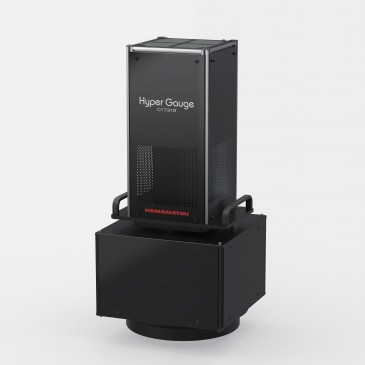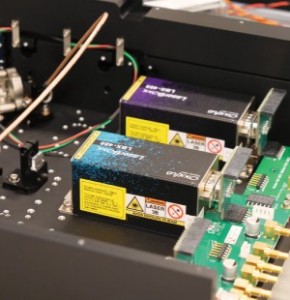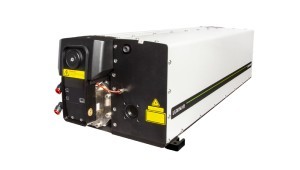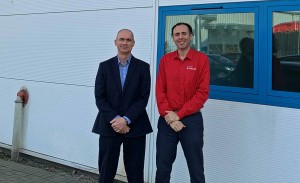
In this article, Jose Pozo, EPIC's CTO, talks to Roy McBride, CEO and co-founder of PowerPhotonic, a specialist in precision freeform micro-optics.
Background
Roy graduated with a BSc in Physics and Electronic Engineering from the University of Glasgow in 1987 and subsequently gained a PhD in Physics from Heriot-Watt University. In his early career, he worked as a Laser Development Engineer, a Researcher and a University Lecturer before joining Kymata in 2000 as Electronics Development Manager responsible for developing embedded systems for telecom components. Later Kymata was bought by Alcatel UK, and Roy was appointed Hybrids Development Manager responsible for developing advanced active modules for optical communications. However, by 2003, the telecoms bubble had burst and Alcatel and other telecoms companies made many layoffs. At this point Roy decided to take his career in a new direction with PowerPhotonic.
PowerPhotonic
Around this time the world-renowned Institute of Photonics and Quantum Sciences at Heriot-Watt University had developed a ground breaking laser ablation technique and needed an experienced photonics industry expert to commercialise the technology. Roy was perfectly positioned and PowerPhotonic was formed in 2004 with Roy at its helm.
As he recalls: "I’ve have always enjoyed exploring the possibilities of new technologies, so the challenge to develop and commercialise one was irresistible to me. I was excited to see how far I could take the opportunity.”
The technology
PowerPhotonic’s unique manufacturing method is based on a laser ablation process that first cuts, then smooths the surface of fused silica glass. Versus traditional production methods, this gives unprecedented flexibility in the variety of optical surfaces that can be manufactured, including a wider dynamic range, sag up to 200micron, flexible aspect ratios and an agnostic approach to symmetry, all while improving on the levels of surface roughness that can be achieved. This flexibility can also enable the integration of multiple functions in a single optic, reducing component count, assembly, test time and cost, while increasing reliability.
The patented process also overcomes the intrinsic limitations of traditional optics manufacturing techniques, such as greyscale lithography, micro milling and micro-molding, by reducing the time to first prototypes and minimising set up costs. Both of which impact on how readily new micro-optic designs can be evaluated and implemented in laser systems. Customers are able to create innovative freeform surfaces, test new ideas and verify designs for production without incurring expensive upfront engineering charges and lengthy prototyping lead times.
More than that, PowerPhotonic’s process enables successful designs to be taken directly from prototype, through ramp-up, to volume production quickly and efficiently, to provide customers with the easiest possible path from design to fabrication.
As Roy says: “The need for optics in laser products is not new. What makes PowerPhotonic different is that we have a whole new way of making micro-optics. We have a developed a revolutionary commercial process, which makes our offering uniquely competitive.”
PowerPhotonic growth
After an initial phase of developing the technology to make it robust and stable for high volume commercial use, Powerphotonic shipped its first products in 2006. Originally focussing on the high performance, high margin, niche for micro-optics in the science and defence sector, where PowerPhotonic offered the only viable solution, it had early success in the U.S market where its products were built into a number of world leading programmes.
Further success came from a focus on the diode laser market, but when fibre laser market began to supplant diode lasers, a strategic rethink was required. The company quickly recognised that it needed to diversify to continue to grow.
“We knew that our unique optics fabrication capability and design expertise would enable us to offer products that outperform the alternatives in terms of functionality and performance, even in applications and market sectors where there was established competition. Specifically, in medical, telecoms, industrial materials processing, display, and science and defence sectors “, commented Roy.
To enable this strategy, Powerphotonic invested in a new sales and marketing function, extending its reach to more customers, in more markets and over a wider geography, and the company succeeded in dramatically increasing its customer base.
Today PowerPhotonic supplies micro-optics to tier one laser industry customers worldwide across a broad spectrum of applications and, as a result of this success, has just transferred operations into a larger, 15,820 square foot facility, which can operate 24/7, 365 days with minimal human intervention. The move was completed in 2018 and includes the creation of a new class 1000 clean room facility to expand production capacity.
As Roy points out:“This represents a landmark expansion to our business, as demand for our unique technology continues to grow rapidly across a wide spectrum of worldwide laser applications.”
Whether the laser beam needs to be focussed or diffused, shaped or magnified, PowerPhotonic can provide an optic to achieve the desired performance, including slow and fast axis collimators, lens arrays, beam shapers and correctors.
Future applications
The laser industry continues to evolve fast and Roy sees many growth opportunities for PowerPhotonic in a range of new applications from the automotive industry to the medical sector.
For example, super resolution microscopy that enables imaging of living cells. Development of this technology will bring about a new class of microscope that will be good news for both components and systems vendors. Similarly, there have been a number of developments in laser material processing, e.g., multi spot beam shaping, surface structuring and surface functionalization that will require a lot more laser power and laser equipment.
What would you have done differently?
Built the team quickly: "What you need is a team in place right from the start so you can use the energy and momentum from the team to drive the company forward."
Raised more investment earlier: "I could have asked for it earlier and I could have been bolder and raised twice as much investment. In the beginning you tend to ask for just enough money and underestimate what you need."
Bolder about exploiting opportunities: "We could have been bolder about exploiting the opportunities and started selling into a wider market earlier. It is also critical to have local people in place to help you sell, both reps and distributors have a key role to play."
What words of wisdom do you have for the new generation of entrepreneurs?
Make a decision about your future: "If you want to run a business, then go out into industry and get experience of how the different parts of a business operate and acquire the tool set to build your business."
Don't wait to build your team: "Do it as soon as you can because the energy and momentum from the team is crucial for growing the business."
Hire the people with a proven track record: “There is no substitute for experienced people, who bring both a wealth of practical experience and a network of contacts.”
Be bold: "Be bold with what you have to offer and the investment you ask for."
Written by Jose Pozo, Director of Technology and Innovation, EPIC













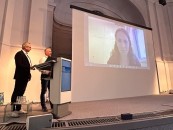






















 Back to Features
Back to Features